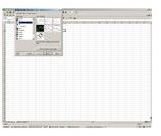Learn How to Create a Six Sigma Run Chart in Excel
Overview of a Run Chart
A run chart is a form of control chart. It is considered the simplest form of a control chart because it only shows the elementary measurements of data tracked over a period of time. A control chart tracks variation over time. A process is considered “out of control” if the process has changed over time. Learn how to create and use a run chart in Excel in this article. [caption id=“attachment_133230” align=“aligncenter” width=“512”] Run charts help track values related to your project on a timeline[/caption] With a run chart, you can use a center line to create your mean or median. You won’t, however, have any control limits. You can use the run chart to group samples together and run statistical tests. If you have simple patterns that you are trying to compare, you can easily see if your process is out of control by simply looking at the chart. A run chart allows you to plot your data over time. Your X axis shows your time measurements, and your Y axis shows what is being measures. For more information on run charts, read Jean Scheid’s Six Sigma Glossary.
Run charts help track values related to your project on a timeline[/caption] With a run chart, you can use a center line to create your mean or median. You won’t, however, have any control limits. You can use the run chart to group samples together and run statistical tests. If you have simple patterns that you are trying to compare, you can easily see if your process is out of control by simply looking at the chart. A run chart allows you to plot your data over time. Your X axis shows your time measurements, and your Y axis shows what is being measures. For more information on run charts, read Jean Scheid’s Six Sigma Glossary.
Creating Your Chart
Now, you can create your run charts in Excel and their QI Macros SPC Software ($139 online). To create your charts, you can follow these steps. 1. Go to File New Worksheet. 2. Right click on Sheet 1 at the bottom, and click rename. 3. Rename your worksheet. 4. Choose the data that you want to compare. 5. Select the type of chart that you wish to use from the QI Macros pull-down menu. To read how Six Sigma can improve your organization, read How to Implement Six Sigma.
Finding the Median
Since one of the major components of the run chart is the median, you want to be able to find this in your Excel document. Follow these steps to figure out your median in Excel. 1. Go to Insert, and click on Function (fx). 2. Click All in the left-hand side. 3. In the right-hand column, scroll down until your find Median. 4. Input your numbers. 5. Click OK. The median for the figures that you inputted will show up in the cell. For information on ten free Six Sigma templates, read <em>10 Free Six Sigma Templates You Can Download</em> by Michele McDonough. To create your run chart, you should follow these steps. 1. Input the dates and data from your research into the Excel cells. 2. Input the median from your calculations, and add this information to each date. 3. Select the data that you want to chart on your run chart. 4. Click the Chart Wizard icon. 5. Select Line Chart from the Chart Type menu. 6. Fill in the required information on the menu. 7. Once all the information has been entered, Excel will create your chart for you. To learn how to create a Gantt Chart in Excel, read <em>Using Excel to Create a Gantt Chart</em> by Michele McDonough.
Changing the Rules
If you want to alter how your line looks, you can click on the median or data lines. If you need to change the rules for your chart, this can easily be done by following the below procedures. You must always remember to select line chart since Excel’s default chart is bar. 1. Go to your QI Macros menu. 2. Click Control Charts and then Control Chart Rules. 3. Pick which rules apply to what you are doing. It may take a few minutes to update the rules file. 4. Run your selected chart. For more information on six sigma, read Six Sigma is Essential in Project Management Planning by JScheid. Run Chart Image courtesy of Wikimedia Commons
